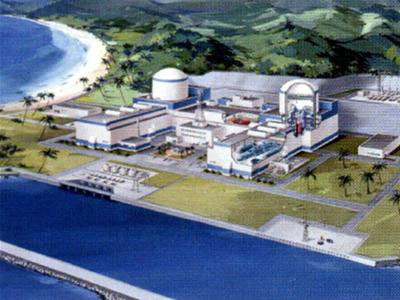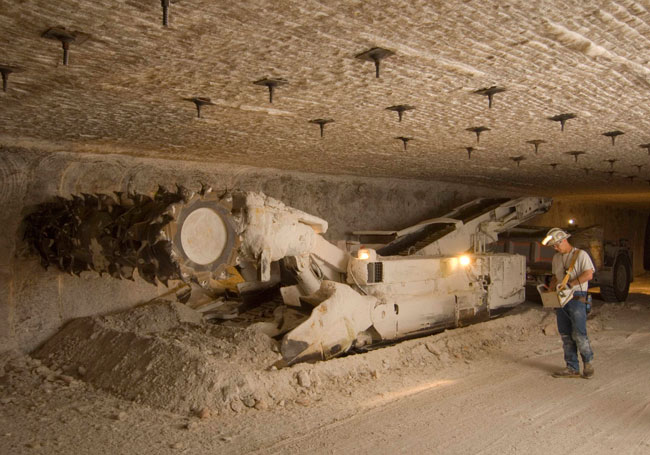
Blog
-
Geiger Readings for January 27, 2014
Ambient office = 115 nanosieverts per hourAmbient outside = 137 nanosieverts per hourSoil exposed to rain water = 100 nanosieverts per hourCarrot from Central Market = 73 nanosieverts per hourTap water = 63 nanosieverts per hourFiltered water = 56 nanosieverts per hour -
Nuclear Reactors 201 – Vietnam Delays Nulcear Reactor Construction
I have blogged in the past about the push by the nations that produce nuclear components, reactors and fuel to sell nuclear reactors to the developing world. While the nuclear industry brags about international sales prospects, the truth is not as attractive. Aside from all the usual dangers associated with nuclear power that I have detailed in many posts, there are some special issues with building nuclear reactors in developing nations. Fortunately some of the developing nations are being cautious about adopting nuclear power.
Vietnam must find new sources of electricity. It used to export coal but now it has to import coal. It is running out of oil and natural gas and it has exploited most opportunities for hydro power. Vietnam had plans to build thirteen nuclear reactors at eight power plants by 2030. These reactors would supply fifteen gigawatts to the Vietnamese national grid.
Russia aggressively courted Vietnam and was rewarded with a 2010 contract to build the first plant called Ninh Thuan 1. Russia has promised to lend Vietnam eight billion dollars for the project. The Russian deal will have Russia’s Rosatom build the reactor, staff the reactor, provide fuel and remove spent fuel. A nice comprehensive arrangement. Construction was to have begun in 2014 and was going to take about six years.
In 2011, Vietnam contracted with Japan Atomic Power to have a feasibility study conducted on the construction of a second nuclear power plant called Ninh Thuan 2, near Ninh Thuan 1. This plant will be constructed using U.S. or Japanese technology. Westinghouse, a U.S. subsidiary of Japan’s Toshiba corporation, is very interested in building Ninh Thuan 2. They just signed an agreement with Vietnam to train staff to manage and operate nuclear power plants.
Vietnam pushed back the start of construction for Ninh Thuan 1 from 2014 to 2017. Just recently a government official said that the start of construction was now scheduled for 2019. Apparently creating the “legal framework” necessary for the construction project has proven to be more difficult that was expected. In addition, demand for electricity in Vietnam has not risen as much as was forecast. The demand this year was about a hundred and fifty billion kilowatt hours as opposed to the predicted demand of around two hundred billion kilowatt hours. This is partly due to reduced economic growth.
Safety concerns have also slowed work on the nuclear projects. The Fukushima nuclear disaster in Japan caused the Vietnamese government to reassess its safety protocols. Fortunately for the Vietnamese people, the government is making nuclear safety a priority.
Vietnam was ranked one hundred nineteenth in an international corruption index in 2014 out of one hundred and seventy five nations. Corruption in the construction, operation and/or regulation of nuclear power reactors can have devastating consequences. Corruption was part of the cause of the Fukushima nuclear disaster.
There is also the matter of nuclear blackmail. If Russia goes ahead with its plan, it could easily turn off the Ninh Thuan 1 power plant any time it wanted to pressure Vietnam to support its foreign policy. Considering that it will be five years before construction of the first power reactor even begins in Vietnam, they would be better served to explore alternative sustainable sources of power such as solar, wind and tidal systems.
Artist’s concept of Ninh Thuan 1 Nuclear Power Plant:
-
Geiger Readings for January 26, 2014
Ambient office = 60 nanosieverts per hourAmbient outside = 128 nanosieverts per hourSoil exposed to rain water = 130 nanosieverts per hourBanana from Central Market = 135 nanosieverts per hourTap water = 97 nanosieverts per hourFiltered water = 79 nanosieverts per hour -
Geiger Readings for January 26, 2014
Ambient office = 60 nanosieverts per hourAmbient outside = 128 nanosieverts per hourSoil exposed to rain water = 130 nanosieverts per hourBartlett pear from Central Market = 135 nanosieverts per hourTap water = 97 nanosieverts per hourFiltered water = 79 nanosieverts per hour -
Geiger Readings for January 25, 2014
Ambient office = 122 nanosieverts per hourAmbient outside = 159 nanosieverts per hourSoil exposed to rain water = 164 nanosieverts per hourBartlett pear from Central Market = 187 nanosieverts per hourTap water = 82 nanosieverts per hourFiltered water = 63 nanosieverts per hour -
Radiation News Roundup January 24, 2014
Fukushima is the most serious manmade disaster in human history. enenews.com
The process potentially to restart Belgium’s Electrabel’s Doel 3 and Tihange 4 nuclear reactors has been extended to 1 July so the utility can answer further questions from an independent panel. world-nuclear-news.org
One of the nuclear reactors at the UK’s Hinkley Point B power plant will be taken out of service later today for a maintenance program worth $60 million. world-nuclear-news.org
NuScale targets 2016 to apply for NRC approval for its transportable nuclear power system. bizjournal.com
-
Geiger Readings for January 24, 2014
Ambient office = 76 nanosieverts per hourAmbient outside = 89 nanosieverts per hourSoil exposed to rain water = 99 nanosieverts per hourRed seedless grapes from Central Market = 79 nanosieverts per hourTap water = 129 nanosieverts per hourFiltered water = 115 nanosieverts per hourPacific Cod – Caught in USA = 68 nanosieverts per hour -
Radioactive Waste 114 – Ceiling Collapses at the Waste Isolation Pilot Plant in New Mexico
Last February there was an “incident” at the Waste Isolation Pilot Plant near Carlsbad, New Mexico. Radioactive particles escaped from the geological repository for wastes associated with nuclear weapons production. A drum of waste exploded and released the radioactive particles which were detected up to twenty miles away. Filters and fans did not work correctly which allowed the radioactive material to escape.
The WIPP has existed for about fifteen years and it appears that corners were cut and procedures ignored. Originally the separate “rooms” in the old salt mine were to be sealed with two foot thick doors when they were full of drums of waste. Then they changed to steel doors. Eventually they dispensed with doors altogether. There would have been no radioactive release last February if the “room” where the drum exploded was sealed properly.
Apparently a mix of chemicals generated explosive gas. The exact contents of the drum are not know because records were not kept correctly. The drum is one of a batch of a hundred of drum from the Los Alamos National Laboratory (LANL) that were treated with the wrong chemicals before being shipped to WIPP. Other drums may explode. Investigation is ongoing on the incident and the danger posed by other drums in the same group from LANL. The repository is shut down while the level of radiation goes down and examinations are conducted.
The huge “rooms” at WIPP left from mining the salt are being filled with drums of waste. Eventually it is expected that the ceilings of the “rooms” will collapse onto the drums of waste in the sealed “rooms” entombing them. Unfortunately, the pressure from the surrounding geological formations is causing the walls of the mine to shift. This month, it was reported that one wall of one of the rooms was collapsing inward so they had to use bolts to reattach the wall. Other areas have required bolts to reinforce and apparently the number of bolts per linear foot is exceeding safety standards.
A few weeks ago, it was revealed that portions of the ceiling in one of the “rooms” had collapsed. An inspection team found that there were seven areas in the “rooms” that were in danger because bolts were failing. To date, over three hundred damaged bolts have had to be removed. The bolting of ceilings is critical to safety and is proceeding as part of the general recovery from the accident last year.
The situation at WIPP just keeps getting worse. WIPP is the only national geological repository for nuclear weapons waste. Negligence has resulted in the release of radioactive materials. If other drums explode, there may be more releases. It may be that they have not yet fully detailed all the problems in at WIPP. It will take years and hundreds of millions of dollars to repair the damages in and disintegration of the repository. This could have been prevented if the NRC had done its job and the WIPP operators had been held to the written regulations for the repository.
WIPP ceiling bolts:





